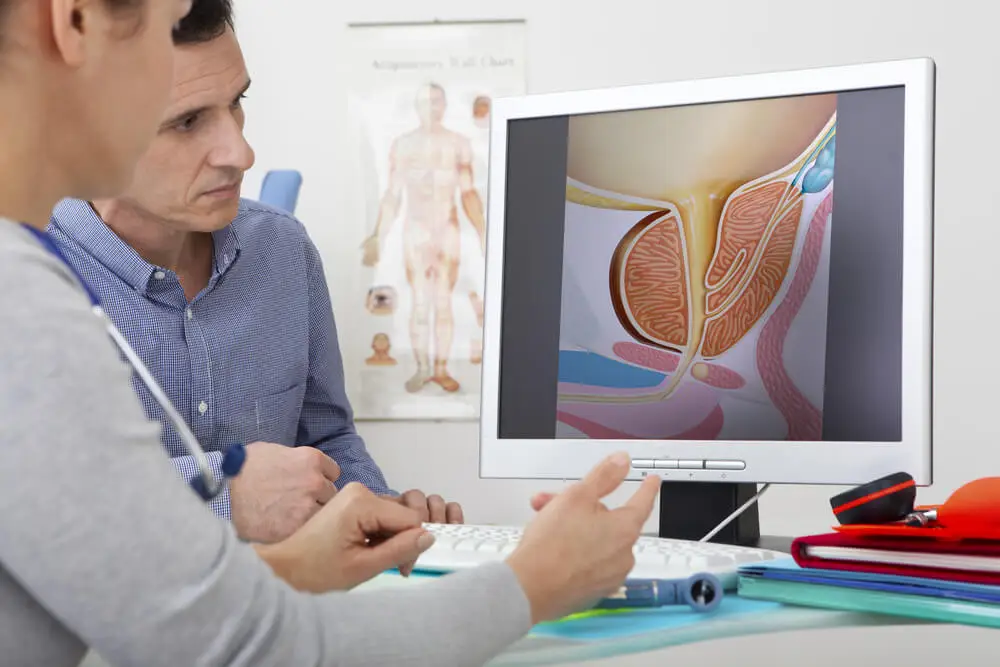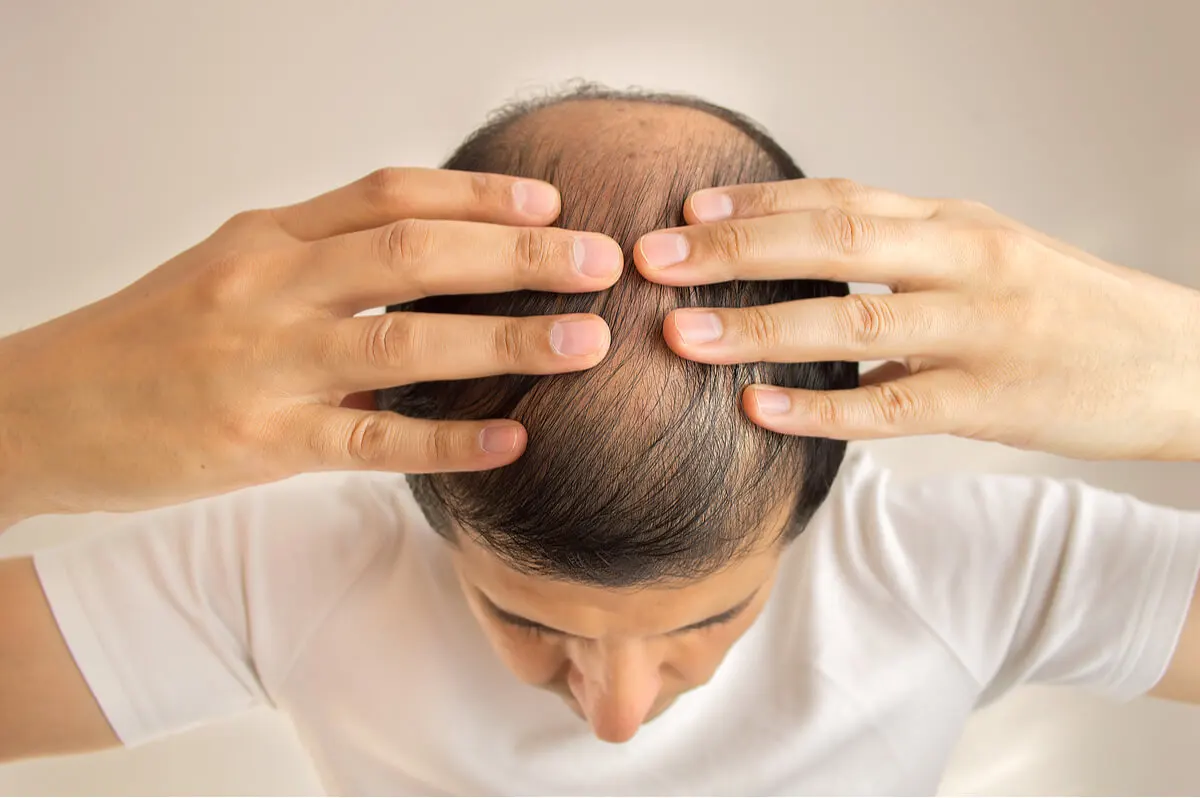Dihydrotestosterone: What It Is and Associated Health Problems

Dihydrotestosterone is an androgen – in other words, a male hormone. It plays a major role in the development of sexual characteristics in the embryo. It’s also associated with sexual development, libido, muscle mass, and other aspects.
Dihydrotestosterone is a compound that has its origin in testosterone, which is the male hormone par excellence. Five percent of testosterone is eventually converted into dihydrotestosterone. This androgen also influences hair loss and prostate health.
What is dihydrotestosterone?

Dihydrotestosterone, or DHT, is a male sex hormone, i.e. an androgen. All hormones of this type affect the development of male sexual characteristics. They’re also known as androgenic hormones.
Dihydrotestosterone is the result of a process in which there’s a conversion of testosterone. This is carried out by the action of an enzyme called 5-alpha reductase. This process takes place in the prostate, testes, and adrenal glands.
It’s estimated that dihydrotestosterone is about three times more potent than testosterone. Among its properties, it has an impact on prostate growth, scalp hair implantation, and facial and body hair growth.
The importance of dihydrotestosterone in sexual development
Dihydrotestosterone plays an important role during the development of an embryo. It directly influences the formation of the male external genitalia. If something is wrong with this hormone, cases of ambiguous sex can occur.
During puberty, dihydrotestosterone plays an important role in the development of sexual characteristics, as it contributes to the development of genitalia and the growth of pubic and body hair. It also causes the prostate to grow.
Together with testosterone, this hormone influences the expression of sexual preferences and behaviors. It’s considered the main androgen involved in prostate and hair follicles.
Girls also have dihydrotestosterone, but the role of this hormone in the female body isn’t yet known in detail. It appears to play a role in the appearance of pubic hair and determines the onset of puberty.
Dihydrotestosterone-related diseases
Both men and women can have problems associated with high or low levels of dihydrotestosterone. However, in both genders, these can be mild in some cases and noticeable in others. Let’s look at this in more detail.
You might also be interested in: Is it Bad to Shave or Remove Pubic Hair?
1. Sexual development
High levels of dihydrotestosterone in men produce no appreciable effects. For women, when this occurs there may be excess facial and body hair and a deepening of the voice. There may also be problems with menstruation.
If hormone levels are low, women experience no significant effects. However, it does have an impact on men. If you’re in puberty, you may not develop body and facial hair, or your genitals may not develop fully.
2. Alopecia

In men, dihydrotestosterone is the main factor in the development of androgenic alopecia. In women, it can also play a role in hair loss, but it’s only one of the factors that come into play.
This hormone is present in hair follicles. When its level is very high, it causes alopecia of hormonal and genetic origin. Dihydrotestosterone clings to the hair follicles and causes them to shrink, resulting in baldness.
Put more graphically, what dihydrotestosterone does is suffocate the follicle. The immediate effect is the loss of vitality, strength, and color in the hair. As the process progresses, hair loss occurs. This process is known as “miniaturization”.
3. Prostate problems
Dihydrotestosterone can also affect the prostate, as it’s present in this organ. High levels of this hormone have been associated with the development and exacerbation of benign prostatic hyperplasia.
However, there’s no evidence to suggest that this androgen is the origin of prostate enlargement. In other words, it aggravates the condition, but doesn’t create it.
A study published in The Journal of Urology showed that the most aggressive prostate cancers are related to low levels of dihydrotestosterone in the gland. That is, the decrease in this hormone allows tumor growth, probably due to the development of a greater number of androgen receptors.
4. Other
In both men and women, dihydrotestosterone is believed to contribute to the development of acne, as well as to muscle development, to the human behavior of aggression and libido, and to insulin sensitivity and vascular tone. High or low levels of the hormone can contribute to health problems in these areas.
Discover more here: Androgenic Alopecia: Symptoms, Causes and Treatment
Medical consultation is recommended
There are several products to treat alopecia, and they’re made from inhibitors of the 5-alpha reductase enzyme. Let us remember that this enzyme is the one that promotes the processes that transform part of the testosterone into dihydrotestosterone.
However, it has been detected that these products can become the cause of problems such as erectile or ejaculatory dysfunction, loss of libido, depression, and gynecomastia or breast growth in men. Caution should be exercised in their use.
All cited sources were thoroughly reviewed by our team to ensure their quality, reliability, currency, and validity. The bibliography of this article was considered reliable and of academic or scientific accuracy.
- Aizpún, M. A., Castelo-Branco, C., Ortega, R., & Moreno, J. C. (2005). Causas e impacto psicológico del hirsutismo. Medicina Cutánea Ibero-Latino-Americana, 33(6), 267-268.
- Mulinari-Brenner, F., Seidel, G., & Hepp, T. (2011). Entendendo a alopecia androgenética. Surgical & Cosmetic Dermatology, 3(4), 329-337.
- Machado, A. J., Navaroli, F., & Mallea, L. (2021). Un método no cromatográfico para la determinación de dihidrotestosterona en plasma. Revista Cubana de Medicina, 25(9).
- Nishiyama T, Ikarashi T, Hashimoto Y, Suzuki K, Takahashi K. Association between the dihydrotestosterone level in the prostate and prostate cancer aggressiveness using the Gleason score. J Urol. 2006 Oct;176(4 Pt 1):1387-91.
- Sahin A, Liu Y, Kam WR, Darabad RR, Sullivan DA. Dihydrotestosterone suppression of proinflammatory gene expression in human meibomian gland epithelial cells. Ocul Surf. 2020 Apr;18(2):199-205.
- Swerdloff RS, Dudley RE, Page ST, Wang C, Salameh WA. Dihydrotestosterone: Biochemistry, Physiology, and Clinical Implications of Elevated Blood Levels. Endocr Rev. 2017 Jun 1;38(3):220-254.
This text is provided for informational purposes only and does not replace consultation with a professional. If in doubt, consult your specialist.








